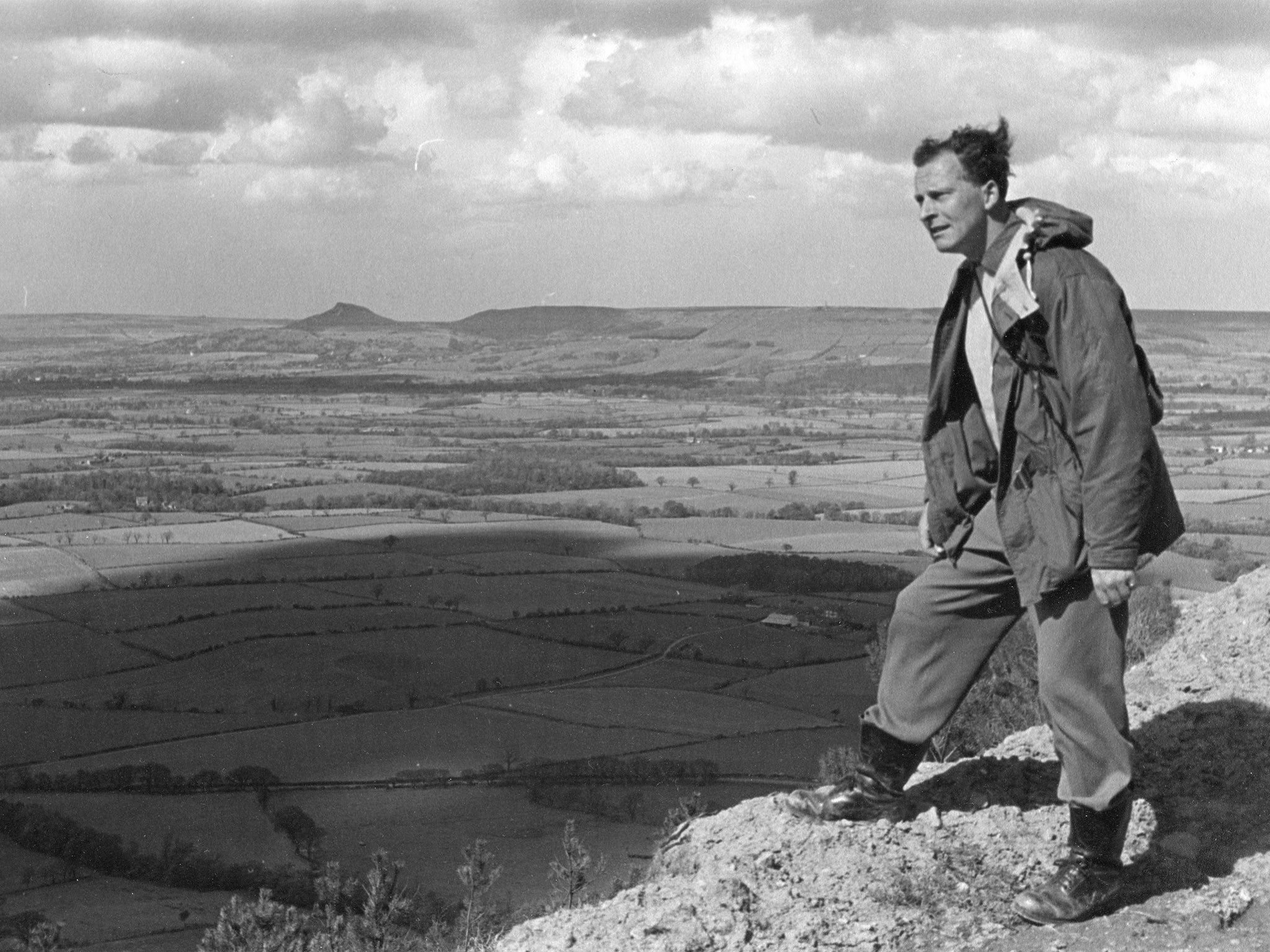Herbert Ellis: Test pilot and aviation medicine pioneer who regularly flew in the face of danger during the course of his research

The Meteor 7 had reached the zenith of the loop, and Herbert Ellis was savouring the "magical moment, well known to any true aviator, when one seems momentarily to hang in space".
But fractions of a second later, still upside-down, he saw the pilot in his charge had blacked out. He seized the experimental research aircraft's control column, finished the manoeuvre, and brought it in to land.
Ellis's speciality as a naval doctor with the Fleet Air Arm in the early 1950s was G-forces, a vital area of research for fliers of the new generation of jet planes, and he possessed unrivalled experience of what harsh thrusts of acceleration can do to the human frame. He had often used himself as a guinea pig, coming close to unconsciousness in airborne trials with a modified Spitfire at the RAF's institute of aviation medicine at Farnborough in Hampshire.
Ellis, driven by fascination to disregard danger, was, as Naval Medical Liaison Officer at Farnborough, doing urgent work to determine how much strain pilots' bodies could take with the new device for take-offs from Britain's five aircraft carriers: the steam catapult.
Pilots supposed the catapult's power would flatten their eyeballs, disabling them just as they got airborne. Ellis tested the probable forces by being shot by rocket in a trolley along a makeshift railway track at Farnborough. The idea sprang from track-runs at more than 600mph, with sudden stops, that were performed by Colonel John Stapp in the United States in the early 1950s to test deceleration. Stapp's eyes bled; for Ellis, the bodily punishment of speed broke his neck – for the rest of his life he endured the effects of a compression fracture. He was nevertheless able to reassure the Royal Navy that the catapult would not blind or disorientate.
Ellis worked on and tested pressure suits and helmets for use with ejector seats, endured "the bends" (nitrogen bubbles in the body) while flying in unpressurised cockpits, flew so low and fast the buffeting burst his aircraft's rivets out, and explored high-altitude physiology in the then-new Canberra jet bomber.
Naval squadrons still used propeller aircraft such as the Firefly, but Ellis introduced senior officers to Farnborough's experimental Canberra. That coup, together with his ability to fill a gap when a squadron was one pilot short, and land one of the Fireflys on the deck of HMS Theseus off Plymouth, charmed his Navy bosses into letting him stay longer at Farnborough to do more research.
Ellis studied the way pilots in fast jets used their eyes, and concluded that they were so busy that audio, rather than visual, signals were best for communicating height and speed as they came in to land. The type of bleeps he developed for naval airmen have since become universal as car-parking sensors.
His work brought him a PhD, the Gilbert Blane Medal for advances in naval medical science, and the almost unheard-of award for a non-RAF man of the Air Force Cross.
But the sun was already setting on what Ellis later described as a "carefree period in the development of British aviation". The year 1954 brought two epoch-ending crashes, from metal fatigue, of the Comet –Britain's, and the world's, first civilian jet passenger aircraft.
Ellis had also begun to notice how American research was pulling ahead of Britain's and focusing on space exploration. Finding himself sent on a US tour as part of a team assessing Cold War defence measures, he accepted an invitation to spend two years "on loan" to the US Navy. He arrived just as the Suez debacle of November 1956 sent a chill through US-UK relations, and spent his first weeks barred from most tasks beyond talking to some chimpanzees kept at the base he was sent to, Johnsville near Philadelphia.
The chimps were used for early space trials with a centrifuge, and as soon as affairs thawed he proposed some human spins on the machine, pioneering them himself. The trials would pop out his tooth-fillings and leave him with permanent balance problems.
Ellis was the son of a First World War flier, and first flew as a toddler sitting on his mother's knee. He had cadet air-rides while a teenager at Oundle School, Northamptonshire, then trained in medicine at Durham University, applying to join the Royal Navy while doing so.
He was posted to hospitals in Malta, then back to England at Gosport, where the future Rear-Admiral Ian Robertson (died 2012), a lifelong friend, gave him four hours' unofficial tuition in a Tiger Moth before letting him go solo. He gained his wings in 1948, the same year he qualified as a doctor.
Ellis left the Royal Navy in 1959 and had a spell in the motor industry before becoming director general from 1971-73 of the children's charity Barnardos. He was also an industrial medical consultant and served as a government health adviser for 20 years from 1972. He published a memoir, Hippocrates RN, in 1988, and in 1989, as chief commander of the St John Ambulance Service, offered the organisation's expertise to the Taylor Inquiry into the Hillsborough disaster. His second book, Why Not Live a Little Longer?, was published in 1996.
Anne Keleny
William Herbert Baxter Ellis, AFC (1954), KStJ (1989), aviation medicine pioneer: born Newcastle upon Tyne 2 July 1921; married first 1948 Margaret Limb (marriage dissolved, one son, one daughter); second 1977 Mollie Clarke (marriage dissolved); third Jean Gross (died 2013); died Pershore, Worcestershire 4 October 2014.
Join our commenting forum
Join thought-provoking conversations, follow other Independent readers and see their replies
Comments